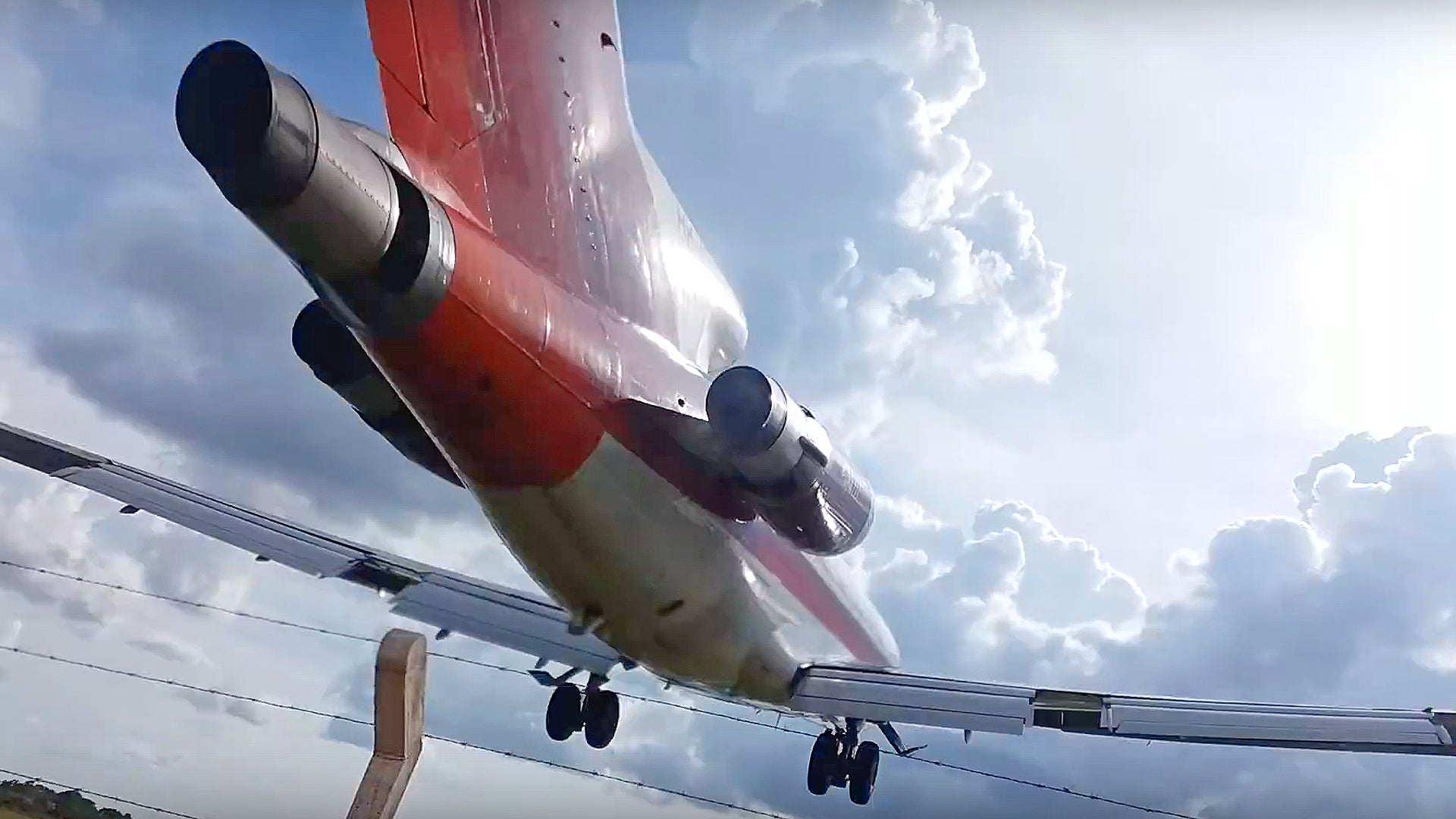At 5:23pm local time, an Aerosucre Boeing 727-200F cargo jet with six crew aboard did not get off the ground as planned during its takeoff from Puerto Carreño Airport in Colombia. The 727, departing for Bogota, overran the runway at high-speed and plowed through a fence, then across a field at a nose-high attitude before struggling into the air under ground effect. Moments later, the 41-year-old airliner tumbled wing-down into a field roughly ten miles from the airport. Reports are sketchy but it seems that one of the crew miraculously survived the crash.
Weather conditions at Puerto Carreño Airport around the time of the crash included scattered clouds, winds out of the east at eight knots, and 87 degrees. The jet may have been taking off with a tailwind and elevated ambient temperatures affect an aircraft’s takeoff performance. Dramatic videos showing different angles of the mishap surfaced just hours after the crash:



It’s is not clear why so many cameras were pointing at the jet during its departure. Flightaware only shows Embraer 170 regional jets as frequenting the airport’s relatively short 5,900 foot asphalt strip, but there are videos of other aircraft stopping there, including larger 737s and 727s. In fact, one video taken back in October shows what is likely the exact same jet (Aerosucre is thought to have only one operational 727) nearly suffering the same fate as yesterday’s doomed flight.

It seems the jet was operating at the extreme edge of its envelope—or beyond it, in the case of yesterday’s crash. With no margin for contingencies, even small non-technical issues such as changing atmospheric conditions or minor miscalculations in weight and balance and air density could prove deadly during a short-field departure.
The aircraft involved was delivered to Air Jamaica in 1975 and served with the airline for 22 years before being converted into a freighter. It went on to serve with various US cargo carriers before joining Aerosucre’s fleet in 2008. Another Aerosucre 727 freighter crashed in Bogota in 2006 after hitting a TV tower while on approach to land in bad weather, killing six onboard.

The Boeing 727 is an incredibly versatile aircraft. It was designed to be able to operate from shorter runways, though weight restrictions increase as the available runway length decreases. The CIA used the “three holer” for cargo drops, and a dozen earlier models were built for Mexicana Airlines with JATO capability. Today the aging jet can find itself operating under some pretty abominable conditions around the globe—ones that push these old airliners beyond their design limits. Some third world operators are turning these aircraft essentially into bush jets and flying them from semi-improved or downright rough airstrips under very austere conditions. While some jet airliners can fly from short gravel or even hard-packed dirt strips safely under some circumstances, special training, equipment, maintenance, operating procedures and very close attention to detail are needed to make sure it happens safely. Some carriers have excelled in this kind of work, other operators that specialize in it would likely never be allowed to fly in developed countries. It’s risky work, where cheap used-up old airliners seem somewhat expendable, and that doesn’t bode well for the people flying them.

We will have to wait and see exactly what caused this crash. Maybe there was a systemic pattern of pushing the envelope when it comes to safety at Aerosucre, or maybe a technical issue struck the plane at the worst possible time. It could have been a mixture of the two, or something different altogether. At least with so much quality video evidence, investigators might have an easier time getting to the bottom of this tragedy.
Contact the author: Tyler@thedrive.com
